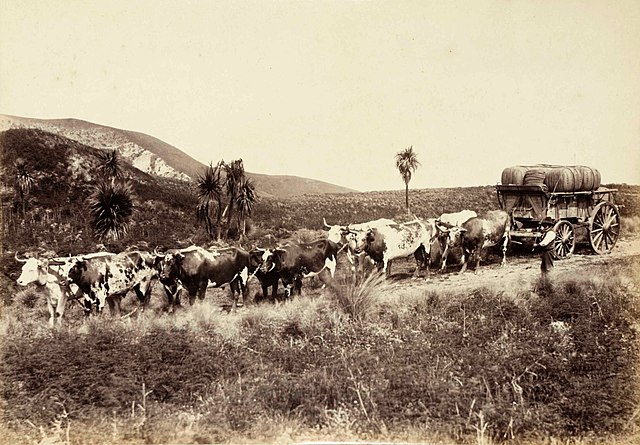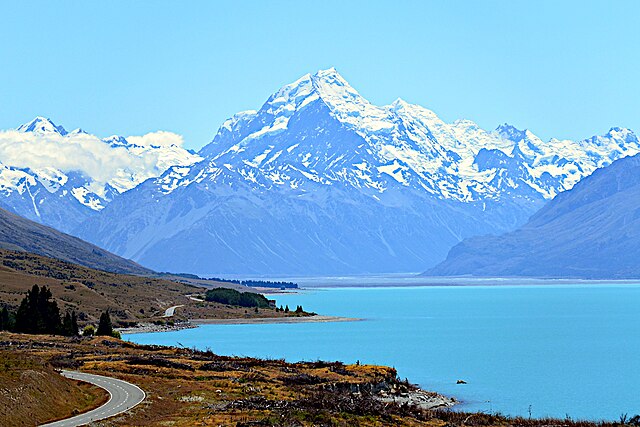Agriculture in New Zealand
In New Zealand, agriculture is the largest sector of the tradable economy. The country exported NZ$46.4 billion worth of agricultural products in the 12 months to June 2019, 79.6% of the country's total exported goods. The agriculture, forestry and fisheries sector directly contributed $12.653 billion of the national GDP in the 12 months to September 2020, and employed 143,000 people, 5.9% of New Zealand's workforce, as of the 2018 census.
A bullock wagon team taking wool from a farm station. The number of sheep in New Zealand peaked in the 1980s and has reduced due to lower profits from wool, and larger breeds of sheep for meat
Beef and dairy cattle are important components of New Zealand agriculture
Rural landscape with sheep
Vineyard in Marlborough
New Zealand is an island country in the southwestern Pacific Ocean. It consists of two main landmasses—the North Island and the South Island —and over 700 smaller islands. It is the sixth-largest island country by area and lies east of Australia across the Tasman Sea and south of the islands of New Caledonia, Fiji, and Tonga. The country's varied topography and sharp mountain peaks, including the Southern Alps, owe much to tectonic uplift and volcanic eruptions. New Zealand's capital city is Wellington, and its most populous city is Auckland.
The Waitangi sheet from the Treaty of Waitangi
A meeting of European and Māori residents of Hawke's Bay Province. Engraving, 1863.
The snow-capped Southern Alps dominate the South Island, while the North Island's Northland Peninsula stretches towards the subtropics.
Aoraki / Mount Cook is the highest point in New Zealand, at 3,724 metres.








